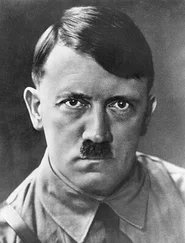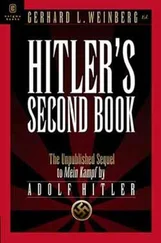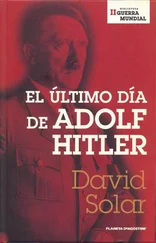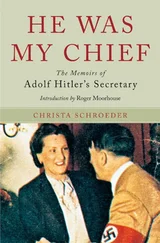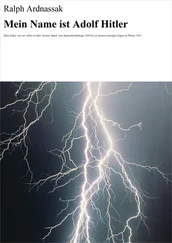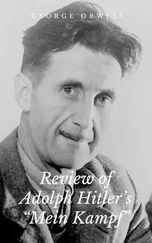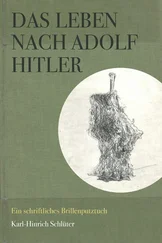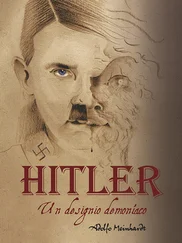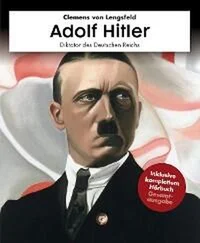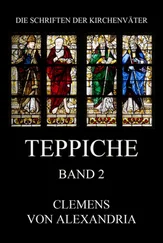ADOLF HITLER (1889-1945)
Biography
by Clemens von Lengsfeld
Translated by Maureen Millington-Brodie
Impressum
Volume 7 and 8 from the People, Myths, Power series
Copyright: © 1st edition 2016 Griot Hörbuch Verlag GmbH, Stuttgart
Cover design Diana Enoiu, Martin Lohr
Proofreading and academic consultant: Dr. Mario Faust-Scalisi
Picture editing and further proofreading: Elke Bader
Layout and typesetting e-book: Swift Prosys Pvt Ltd
Chennai, India
Cover picture: Irene von Neuendorff: Adolf Hitler. Portrait,
Painting 1999. Oil on canvas (120 x 90 cm).
All further illustrations with the kind permission of akg images Berlin. www.akg-images.de
More about our audio books, books, speakers and authors at www.griot-verlag.de
This work in all its parts is protected by copyright. The reproduction, even of individual parts, is prohibited. The copyright and all further rights remain the property of the author as well as the publisher. Translation, storage, duplication and circulation, including transfer to electronic data carriers such as CD-ROM, photo disc etc., as well as storage on electronic media such as on-screen text, internet etc. is not permitted without the prior written consent of the publisher. Furthermore, it is not permitted to scan illustrations of this e-book, into PCDDs or onto CDs or alter them on PCs/Computers or to manipulate them singly or together with other images.
ISBN Mobi-Pocket (without audio) 978-3-959980-21-0
Impressum
Provincial childhood
Black pedagogy
Diversions, entanglements and laziness
Bohemian
Glory in victory and catastrophe
Town of the movement
Front-line hogs and base wallahs
The Versailles treaty
Pact and putsch: in November I was a red but now it’s January
The muffled furore
The informant
The drummer
NSDAP
Weeping clown
Putsch
Mein Kampf
Weimar Republic
The puppet masters
The sjambok
30 January 1933…
The Reichstag fire
Adulation and betrayal
The wolf in the Kroll Opera House
The profiteers
Germany’s intellect burns
The night of the long knives
Statesman and seducer
Führer and Reichskanzler
Ladies’ man
“Brother Hitler”
Threatening gestures and breaches of treaty obligations
Humiliation and threat
Hácha’s difficult course
The writing on the wall
The admonisher
Deception and lying
Grandmother died
Elser
Bürgerbräukeller
The archenemy
One song, two, three
Compiègne
Operation Barbarossa, the world blitzkrieg
Juggler of the moment
Extermination behind the front
The battle for Lebensraum
Крысиная война – rat war
Stalingrad – mass grave
Pearl Harbor
Final solution
Janusz Korczak
20 July 1944
Wolf’s Lair
Bendlerblock
Revenge and retribution
The sky is on fire
Limbo
Forget-me-not
The big trek
Twilight of the gods
The coward’s way out
Chronology
Music recordings for the audio book
About the author
Bibliography
Provincial childhood
“My idea of education is tough. Weakness has to be beaten out. My elite academies (Ordensburgen) will produce young men to intimidate the world. A violent, masterful, bold and terrible youth is my wish. The young people must be all of this. They will have to endure pain. There can be no weakness and tenderness with them. The free, magnificent beast of prey must glint in their eyes once again. Strong and handsome is how I want my young people. This is how I can create something new.” 1
The birth had been long drawn out. The young mother lies as if dead amongst the piled up pillows, which only barely conceal the blood on the sheet. She is drenched in sweat and with loose strands of dark hair plastered to her cheeks. They have tucked the infant in next to her. He presses his tiny fists to his mouth. The soft down of his hair gleams dark and wet. Now he lifts his chin and turns his small squashed little head in the direction of his exhausted mother. His tiny nostrils seem to snuffle and sniff the air. His paper-thin lips open slightly and close again, then his pink tongue can be seen. With some effort the infant opens his right eyelid and, underneath it, the iris shimmers a clear blue. Gleaming, with no hint of any green or grey and without a slate-coloured border so that the colour around the pupil seems almost to be without a border. The iris displays the same startling colour as the mother’s. Later this child would deliberately deploy his piercing blue eyes: when he looked into his interlocutor’s eyes for a long time and, in so doing, sink his eyelids very slowly, this gave him subliminal power. Women in his vicinity, above all his admirers, would then swoon.
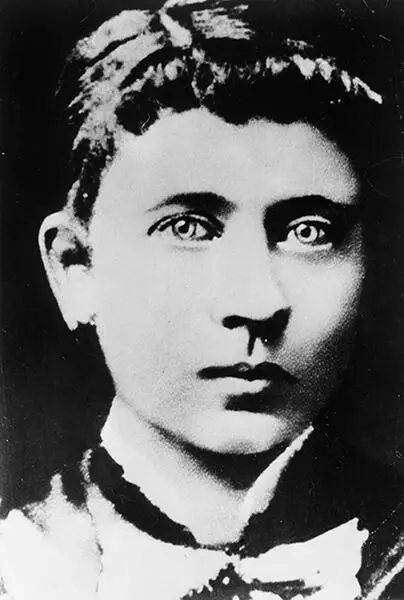
Klara Hitler, née Pölzl (1860-1907), the mother of Adolf Hitler.
“Poppet,” whispers the mother, or rather breathes in the direction of the child: “ my little love, my angel .” Then she sinks into a deep sleep.
The child, who was born on this stormy afternoon in Braunau on the Inn in Upper Austria – it was the twentieth of April in 1889 – had been pushed into the world with much effort, and was christened with the name “Adolf”. Adolf was the fourth child of the customs official Alois Hitler and his wife Klara and the first that was to survive 2.
No one could have guessed that this Adolf would one day become a symbol of unrestrained enthusiasm and terror without limit.
Adolf Hitler himself was later to apply himself diligently to the legend of his origins. He said his father had worked his way up from very modest beginnings into the senior civil service of the imperial and royal monarchy of Austria through his talent and iron ambition. The disreputable fact that his father was an illegitimate child who, afflicted with the stigma of “father unknown”, bore his mother’s maiden name “Schicklgruber” for many years, was carefully not mentioned by Hitler. And even less his uncertain origins. Thus it was that Alois was perhaps not, as long assumed, the child of the impoverished and vagrant miller journeyman Johann Georg Hiedler, but that of his married brother Johann Nepomuk Hüttler. These discrepancies were best concealed. Since, if Johann Georg were Adolf Hitler’s grandfather, in Klara Pölzl his father would have married his second cousin. The degree of relationship would be even closer with Johann Nepomuk as the father: then Alois would namely be the uncle of his wife Klara. This is because Johann Nepomuk was Klara’s grandfather, possibly however, at one and the same time, the father of Alois as well. Whichever of the two brothers may have been the father: Adolf Hitler was the result of close in-breeding within a society. Hitler’s family came from localities close to each other in the Austrian Waldviertel (lower Austria), an area which was reviled amongst fellow countrymen as being particularly backward. Due to the facts left shrouded in mystery, any chatter about his origins Hitler inflamed involuntarily. There was even a rumour about Jewish blood, which was supposed to be a quarter of that which flowed in his veins. It could even be described as an irony of history that the very person who, decades later, was to demand watertight proof of Aryan origins from every German, could 3himself never provide such proof.
The Jewish version was prompted by a photograph of a gravestone on a cemetery in Bucharest: under Hebrew letters the name Adolf Hitler was emblazoned in Latin script, died aged 60 years in 1892 4. There is also the story about the life of his grandmother Anna Maria Schicklgruber. As an employee in the Jewish household belonging to the Frankenbergers, she was made pregnant by her employer. She is even said to have received maintenance payments from old Mr. Frankenberger. The stereotype of the hard and resilient man from the Austrian Waldviertel (Forest Quarter in lower Austria) was laid down over this subliminal gossip. Years later the weekly magazine “Das Reich” depicted it as follows 5: “ From the 15 thcentury onwards, there is evidence of the Hitler (also Hüttler, Hidler or Hiedler) clans in the north-western, original part of the Waldviertel (Forest Quarter in lower Austria). All from solid material, a tough strain: collected strength, perseveringly loyal, bold and robust, and thereby also full of spiritual ardour .”
Читать дальше


